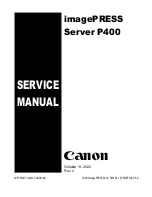
1-7
Cisco SCE 8000 10GBE Software Configuration Guide
OL-30621-02
Chapter 1 Cisco Service Control Overview
Management and Collection
Subscriber Management
Where the Cisco service control application for broadband (SCA BB) enforces policies on different
subscribers and tracks usage on an individual subscriber basis, the Cisco service control management
suite (SCMS) subscriber manager (SM) may be used as middleware software for bridging between OSS
and Cisco SCE platforms. Subscriber information is stored in the SM database and can be distributed
between multiple platforms according to actual subscriber placement.
The SM provides subscriber awareness by mapping network IDs to subscriber IDs. It can obtain
subscriber information using dedicated integration modules that integrate with AAA devices, such as
RADIUS or DHCP servers.
Subscriber information may be obtained in one of two ways:
•
Push Mode—The SM pushes subscriber information to the Cisco SCE platform automatically upon
logon of a subscriber.
•
Pull Mode—The SM sends subscriber information to the Cisco SCE platform in response to a query
from the Cisco SCE platform.
Service Configuration Management
Service configuration management is the ability to configure the general service definitions of a service
control application. A service configuration file containing settings for traffic classification, accounting
and reporting, and control is created and applied to a Cisco SCE platform. The SCA BB application
provides tools to automate the distribution of these configuration files to Cisco SCE platforms. This
standards-based approach makes it easy to manage multiple devices in a large network.
Service Control provides a GUI to edit and create these files and a complete set of APIs to automate their
creation.
Data Collection
Data collection occurs as follows:
1.
All analysis and data processing functions of the Cisco SCE platform result in the generation of Raw
Data Records (RDRs), which the Cisco SCE platform forwards using a simple TCP-based protocol
(RDR-Protocol).
2.
RDRs are processed by the Cisco service control management suite collection manager.
3.
The collection manager software is an implementation of a collection system that receives RDRs
from one or more Cisco SCE platforms. It collects these records and processes them in one of its
adapters. Each adapter performs a specific action on the RDR.
RDRs contain a variety of information and statistics, depending on the configuration of the system.
Three main categories of RDRs include:
•
Transaction RDRs—Records generated for each
transaction
, where a transaction is a single event
detected in network traffic. The identification of a transaction depends on the particular application
and protocol.
•
Subscriber Usage RDRs—Records generated per subscriber, describing the traffic generated by that
subscriber for a defined interval.
•
Link RDRs—Records generated per link, describing the traffic carried over the link for a defined
interval.
















































